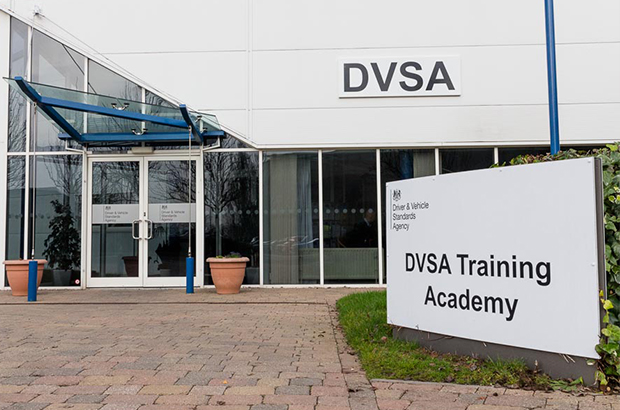
Many learner drivers eagerly anticipate the freedom of the road. However, before taking the practical driving test, they must first conquer the theory test. While often underestimated, the theory test catches many learners off guard annually. A common question among learners is, “How many hours of revision are needed to pass the theory test on the first attempt?”
This guide will provide insights into the recommended revision hours for the theory test and offer tips for effective study strategies to optimize your preparation time.
Revising for the theory test
A common query among learner drivers is determining the optimal amount of revision time for the theory test. While the exact duration varies for each individual, consistent and focused study is crucial.
Key Factors Influencing Revision Time:
- Prior Knowledge: If you have a strong foundation in road rules and regulations, you may require less intensive revision.
- Learning Style: Some individuals learn more effectively through visual aids, while others prefer auditory or kinesthetic methods. Tailor your study approach to your preferred learning style.
- Time Constraints: Factor in your daily schedule and allocate specific time slots for revision.
Effective Revision Strategies:
- Practice Regularly: Consistent practice is key to solidifying your understanding.
- Utilize Online Resources: Take advantage of online theory test practice platforms to simulate exam conditions.
- Study Groups: Collaborating with fellow learners can enhance understanding and provide motivation.
- Break Down the Material: Divide the content into smaller, manageable sections to avoid feeling overwhelmed.
- Take Breaks: Short breaks can improve focus and retention.
Recommended Revision Time:
While there’s no one-size-fits-all answer, it’s generally recommended to allocate a minimum of 10-15 hours of dedicated revision time. However, the actual amount of time needed may vary.
Remember, quality over quantity. Focus on understanding the concepts rather than simply memorizing facts. By following these guidelines and tailoring your approach to your individual needs, you can increase your chances of passing the theory test with flying colors.
How many hours of revision for the theory test are needed?

The optimal duration for theory test preparation varies significantly among individuals. While some learners quickly grasp the concepts, others may require more time, particularly those with learning disabilities like dyslexia.
We recommend allocating at least 10 hours to theory test preparation. However, spreading this time over several days is far more effective than cramming. Consistent study sessions of an hour or two, involving reading DVSA guides and practicing with tests, can significantly enhance your chances of success.
Several factors influence the required revision time:
- Individual Learning Style: Recognizing your unique learning style is crucial. If you’re a visual learner, using diagrams and flashcards can be helpful. For auditory learners, listening to audio summaries or discussing concepts with others might be more effective. Kinesthetic learners may benefit from hands-on activities like creating flashcards or teaching the material to someone else.
- Time Constraints: If you have a limited amount of time, prioritize topics you find challenging or unfamiliar. Consider using intensive study techniques like active recall or spaced repetition. Active recall involves testing yourself on the material, while spaced repetition involves reviewing the material at increasing intervals over time.
- Confidence Level: While confidence is important, it’s crucial to ensure it’s genuine and not misplaced. If you’re unsure about any topic, dedicate more time to it. Don’t be afraid to seek help from a tutor or instructor if needed.
- Driving Lessons: Combining theory revision with practical lessons can reinforce learning and improve understanding. The practical application of theoretical knowledge can solidify your understanding and boost your confidence.
- Dedication Level: Consistent and focused study habits can minimize the required revision time. Procrastination can significantly increase the time needed. Create a dedicated study space, minimize distractions, and establish a consistent study routine.
Remember, thorough preparation is the key to passing the theory test. By understanding your learning style, time constraints, and the complexity of the material, you can tailor your revision plan accordingly.
The theory test format
The theory test consists of two distinct components: multiple-choice and hazard perception. To successfully pass the entire theory test, it is imperative to achieve a passing score in both sections. Therefore, it is essential to allocate sufficient time to prepare for both components, as a strong performance in one section cannot compensate for a weak performance in the other.

Multiple choice
The theory test section lasts 57 minutes, and you must correctly answer 43 out of 50 questions to pass. The questions will cover a broad range of topics, including:
- Alertness
- Attitude
- Essential documents
- Hazard awareness
- Incident and emergency procedures
- Motorway driving
- Other vehicle types
- Road and traffic signs
- Road conditions and vehicle handling
- Rules of the road
- Vehicle safety and maintenance
- Safety margins
- Vehicle loading
- Vulnerable road users
Given the extensive nature of the DVSA’s question bank, dedicated preparation is essential to ensure success in the theory test. To optimize your study efforts, consider utilizing the recommended DVSA revision materials, engaging with theory test apps, or attempting practice tests.
Hazard Perception

This section requires you to watch 14 one-minute video clips depicting various developing road hazards, such as vehicles emerging from junctions or cyclists swerving.
As each hazard unfolds, you must promptly click your mouse to indicate recognition. Each correctly identified hazard is worth 5 points, with earlier identification yielding higher scores. It’s crucial to avoid random clicking, as this can lead to automatic failure. To pass, you must achieve a minimum score of 44 out of 75. For additional guidance, refer to our comprehensive tips on effective hazard perception strategies.
While the direct connection may not be immediately apparent, mastering the theoretical aspects of driving is essential for becoming a safe and confident driver. A solid foundation in driving theory empowers you to apply practical driving skills effectively, such as adjusting speed to accommodate changing weather conditions or responding appropriately in the event of an accident..
Where do I start with theory test revision?

To effectively prepare for your theory test, we recommend exploring our comprehensive guide to top theory test revision resources. This guide offers a wealth of information, including DVSA-approved materials, interactive quizzes, practice tests, and hazard perception exercises. Additionally, we’ve curated a list of top 5 theory test revision apps for convenient on-the-go learning.
To optimize your study time, we suggest delving into our resources guide and consulting our expert tips on how to successfully pass your theory test.
How should I structure my revision?
To effectively prepare for your theory test and maximize your chances of success, allocate 10-20 hours of dedicated revision time. The specific duration will vary based on your individual learning pace and schedule. It’s crucial to avoid last-minute cramming, as this can lead to stress and decreased performance. Instead, divide your revision into concise, focused sessions of 1-2 hours each, spread over several days or weeks. This approach enhances retention and minimizes burnout.
Ensure a balanced allocation of time between multiple-choice and hazard perception practice. Prioritize understanding the Highway Code and other road regulations thoroughly. Consider using online resources like Theory Test Pro, as recommended in our comprehensive guide, to supplement your studies.
Remember, consistency is key. Regular, short revision sessions are more effective than sporadic, lengthy ones. By following these guidelines, you can approach your theory test with confidence and increase your chances of achieving a successful outcome.
Top theory test revision tips
Book your test
Before diving into your theory test preparation, it’s crucial to secure a suitable examination date. Aim to book a slot that offers at least two weeks of dedicated revision time. This strategic approach ensures ample opportunity to acquire and consolidate the necessary knowledge and skills. By scheduling your test in advance, you’ll avoid the stress of last-minute bookings and potential delays. This proactive approach will allow you to allocate sufficient time for focused study, practice, and revision, ultimately increasing your chances of success.
Know the structure
A common pitfall for many learners is a lack of familiarity with the theory test’s structure, especially the hazard perception section. To avoid this, we recommend exploring our comprehensive theory test resources and practicing with the available test simulations.
Figure out your preferred revision style
To effectively prepare for your theory test, it is crucial to identify your preferred learning style. If you learn best through repetition, consider copying passages from the DVSA revision guide. For those who prefer a more interactive approach, utilizing the quizzes in our resource guide or engaging in practice sessions with friends and family can be beneficial. Ultimately, consistent practice is key to success.
Revise on the go
To maximize your revision time, we encourage you to utilize mobile apps for on-the-go learning. By dedicating short periods during your commute or lunch breaks to practice mock tests, you can effectively reinforce your knowledge and enhance your chances of success in the theory test.
Put in the hours
To achieve optimal results, it’s essential to adhere to a consistent daily revision schedule. Procrastination can hinder progress, so it’s crucial to stay focused and dedicated. By consistently allocating time for revision, you increase your chances of success. Failing to do so may lead to additional time and effort required for future attempts. Therefore, minimize distractions and prioritize your studies.
Think about it during your driving lessons
Concurrently undertaking driving lessons and theory test preparation can offer significant advantages. Real-world driving experience can significantly enhance your hazard perception skills, making it easier to recognize potential risks on the road.
Figure out your strengths and weaknesses
Following a rigorous 5+ hours of theory test revision, you’ll likely identify areas of strength and weakness. If hazard perception is your forte, you can allocate more time to the multiple-choice section. Many top revision websites, as highlighted in our guide, segregate incorrect answers into a dedicated question bank, enabling targeted practice.
Prepare yourself for your big day
To optimize your performance on your theory test, prioritize a good night’s sleep the night before. Ensure you have your provisional driving license ready to present at the test center. For additional tips on managing pre-test anxiety, refer to our guide on mitigating test-day nerves.



